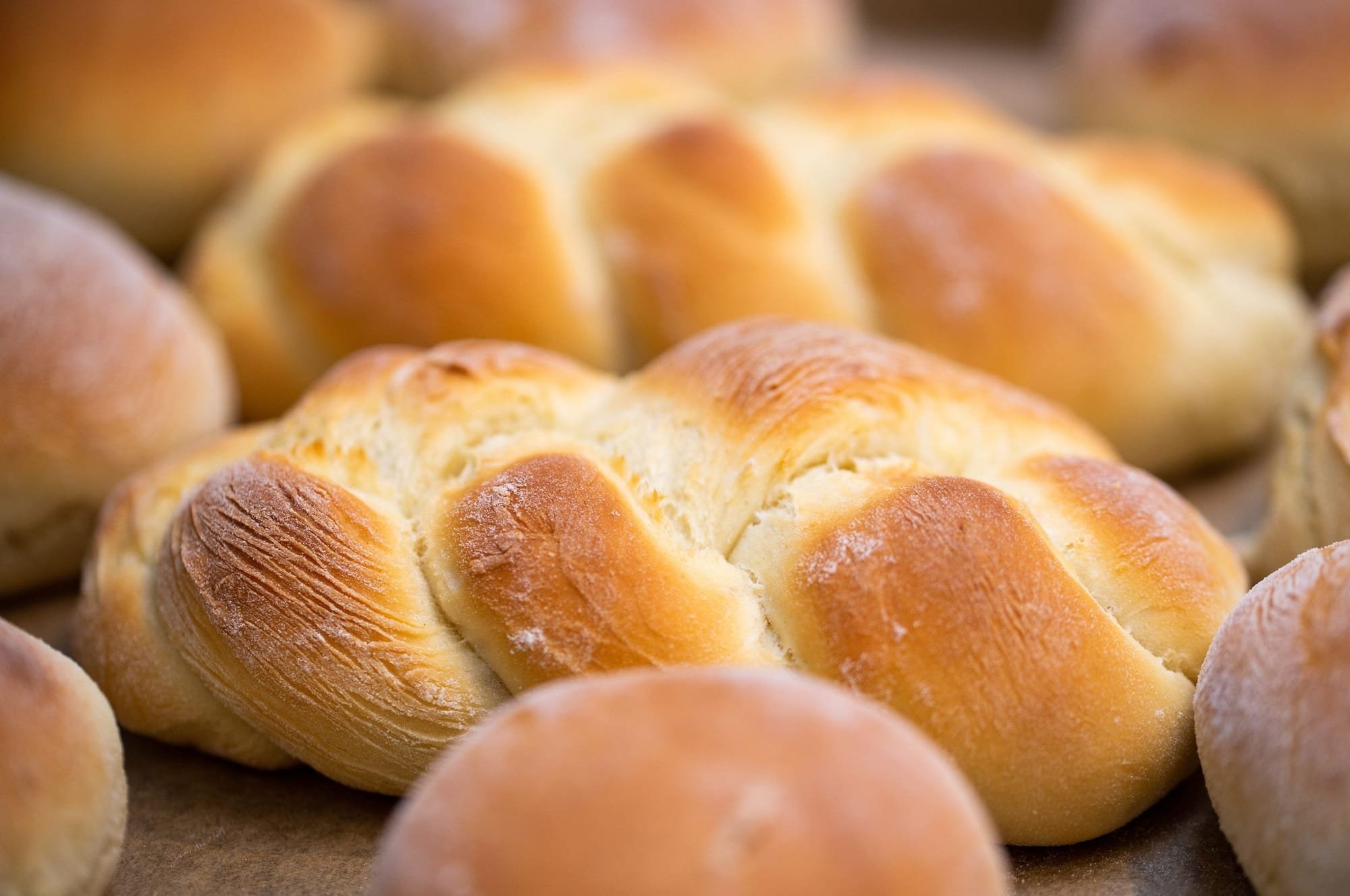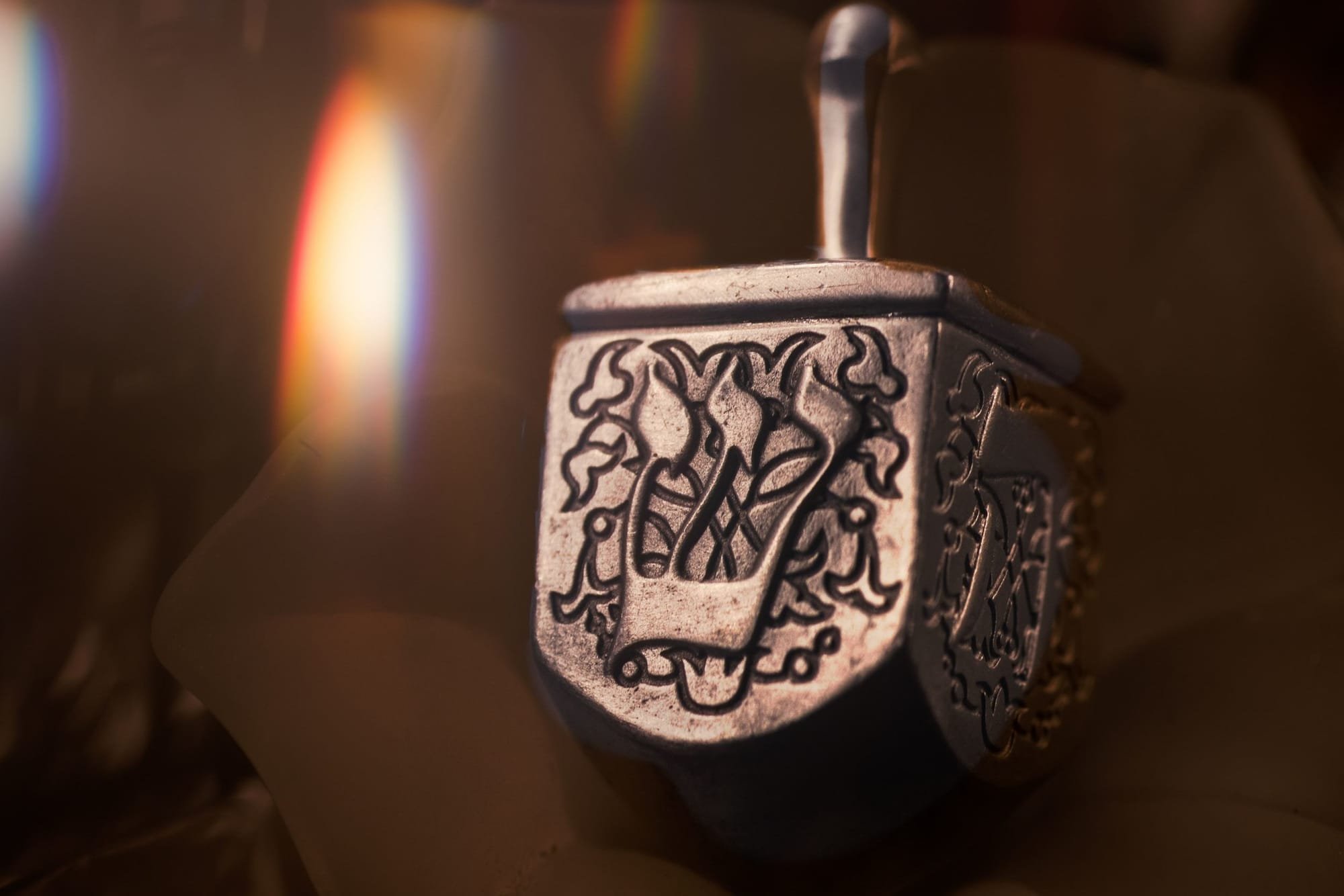Around the World in 80 Foods: Doughnuts, Easy Iskender "Kabobs", and the True Story of Chanukah!


These days the word "Chanukah" has become nearly synonymous with the globally accepted celebration well known to us today as Christmas. At the very least, one might well argue, it has become an easy alternative ("Jewish" or otherwise) for those not wishing to celebrate this holiday which spans millennia and finds its roots in the ancient rites and festivities of Mesopotamia...cradle of early civilizations.
In most recent times the two celebrations have melded traditions so much so that at first glance they appear to be almost identical! Both are held in the winter and include such things as gift-giving and sweets for children, warm music and tables overflowing with every kind of delicate food and drink imaginable. Even the dates for both holidays begin on the 25th of their respective months (by modern "Jewish" tradition, the 8 day celebration of Chanukah begins on the 25th of Kislev, or Chisleu, as X-mas is held on the 25th of December).The similarities seem beyond coincidental; yet were they ever meant to be this way? What are the true origins and traditions of this Hebrew festival of lights? Today I would like take just a moment to share with you what I call " the real story of Chanukah" and authentic traditions that will enrich your Chanukah season for generations to come!
Briefly summarized, Jewish tradition declares that Chanukah was first established by a family of Judeans called the Macabees, after their successful defeat of a tyrant, the rededication of their temple, and a miracle of pure oil meant only to burn 1 day in the newly cleansed lamp (menorah) lasting instead for 8.
Historical documentation supports the story of the ancient Judeans (please keep in mind that these people originally came from the 12 tribes of Israel and that the term "Jew" refers only to those of the tribe of Judah, which is why I do not use this term) becoming subject to the Greek Seleucid (Greco-Syrian) Empire in the 160's B.C. They were ruled over by a particularly cruel and sadistic tyrant named Antiochus Epiphanes, whose sole purpose was to eliminate all vestiges of Hebrew culture, language and especially religion, a process called Hellenization (hence why he desecrated their temple with sacrifices of pigs to his own pagan gods and, according to some sources, tortured many Judeans who resisted). Fearing the extinction of their way of life, the eldest son of the Maccabean family led a rebellion which utterly destroyed the vastly outnumbering Greco-Syrian army. Afterwards the victorious Israelites went back to the temple mount and restored the temple of God. The miracle of the oil is not mentioned in reliable sources, and many believe (myself included) that this part of the narrarative was fabricated by Talmudic rabbis. But here is where the story begins to take on another shape entirely.
The same Talmudic rabbis who fabricated the story of the oil also claim that Chanukah (meaning dedication or rededication) began on the 25th of Kislev, making this the accepted "birthdate" when Jews all over the world (those following this religion, many of whom are not racially of the 12 tribes) begin their 8 days of rejoicing. But is this true, or was this date set by Talmudic rabbis to coincide with the 25th of December, which anciently was observed as the date for Saturnalia, or X-mas? Why would they do this? It is very important to note that Antiochus' invasion and attempted Hellenization program was at the behest of a small group of traitorous"Jewish" aristocracy. It would be quite logical to assume that their efforts did not stop with the defeat of the Syrian army. But were the Maccabees entirely to credit for "inventing" Chanukah...or were they themselves drawing from an even more archaic celebration of rebuilding and rededicating the temple of God?
To find the answers to these questions, I refer back to the ultimate inspired historical reference...The Holy Scriptures (KJV). After being carried away captive by the Babylonian Empire in 587 B.C. and placed in Babylonian cities, the Israelites then passed into the hands of the Medo-Persian Empire after 70 years. It was under the reign of the Medo-Persian kings beginning with Cyrus the Great that the Israelites were permitted, even ENCOURAGED to return to the capital of their homeland, Jerusalem, to rebuild the wall, and more specifically the temple (which had been desecrated/destroyed by the Babylonians...sound familiar?) Two Israelite men, Ezra and Nehemiah, who were contemporaries of each other, came with many of their Israelite brethren to begin such a work. Multiple times enemies of these Israelites went to great lengths to thwart their efforts and very nearly succeeded. However, with divine intercession and encouragement from both the prophets Haggai and Zechariah the son of Iddo, the work was completed. Here I would like to quote a passage from the book of Haggai, where God instructs the people to finish the work of rebuilding the temple.
Chapter 2: 18...Consider this day and upward, from the 4 and 20th (24th) day of the 9th month (Kislev) even from the day that the foundation of the Lord's temple was laud... :19...from this day will I bless you. Now, although the celebration if the COMPLETION of the temple took place at a different time, the emphasis here is upon the very DAY that the foundation was begun. The Maccabees would not have been unfamiliar with this date, especially when this was the day when they recognized God's blessings beginning to be poured out on them. Thus, it makes perfect sense that they would have set the beginning of their festival of joy on the 24th day of Kislev. They also would have been well aware of the pagan significance of the 25th, and avoided it at all costs! Now, why does Chanunukah last 8 days you might ask?
Some scholars state, and after many years of studying the Bible I quite agree, that the 8 days were patterned after the fall festival of Tabernacles (a 7 day holy-day, plus the separate final holyday which makes 8 days in all). Israelites had been keeping this fall holyday since the time of Moses, but the Maccabees may or may not have had the opportunity to observe it fully due to Antiochus.
I propose, therefore, that the original Chanukah was begun on the 24th day of Kislev, and drew upon the traditions of dedication and rebuilding in the days of Ezra, Nehemiah and Haggai, as well of the ancient tradition of Tabernacles which the children of Israel had been observing for generations. One final thought I would like to leave you all with:
After many years of Biblical research, I believe the festival of the dedication (as Channukah is called in John 10:22) was also when the true Light of the World, Jesus Christ, was conceived and began to be brought into the world, culminating in the fall when he would come to "tabernacle" with men. Now...on to the festivities!
In Ezra a full list is given of the riches provided by Cyrus the Great for the restoration of the temple, including: gold, silver, the original vessels of the temple, bullocks, rams, lambs, wheat, salt, wine and oil. For this special time of year my family LOVES to make any and all foods associated with the temple, such as foods fried in oil, marinated in wine (or you could just DRINK it! But nothing in excess!) or heavily seasoned with exotic spices reminiscent of the incense in the temple. Some of our favorites include Indian samosas, authentic tacos, doughnuts, Israeli Hummus Kawarma, spice-crusted leg of lamb, Shakshouka, Swiss vegetable patties with poached eggs and harissa sour cream, or Turkish Iskender "kabobs" on home-made naan or pitas! Now, this last dish requires a little explanation.... Antiochus Epiphanes was descended from the Seleucid Greeks, whose empire came about as a result of the death of Alexander the Great in 323 B.C. and the subsequent dividing of his expansive empire into 4 smaller ones...the largest of whom were the Seleucid and Ptolemaic (Egyptian) Empires. Turkey was a part of the territory that Alexander had amassed, and the Turks, evidently, called him "Iskender" in their language. The recipe that follows was apparently one of "Iskender's" favorites! (I have also included links for some other AMAZING Channukah foods from some AMAZING bloggers! )
Indian Samosa Chaat: http://www.whitbitskitchen.com/2013/03/03/samosa-chaat/
Easy Iskender "Kabobs"
4 extra-large pitas/naans or 8 med-small pitas/naans (can never have too many!)
2 Tbsp. olive oil
1/2 - 3/4 bag of pulled rotisserie chicken (or use leftover roasted chicken in the amount of no less that 3 heaping cup-fulls...approximately enough to match your sauce without it being too dry or too wet)
2 med onions, chopped finely
3 garlic cloves, minced
1 10 oz. can tomato puree (thin with a little bit of water if necessary...just not too much!)
2-2 1/2 tsp. ground cumin
(a dash of smoked or regular paprika, or a pinch of cayenne may be added if desired)
salt and pepper to taste
1-2 Tbsp. butter
1 cup thick Greek yogurt
1/4 cup chopped cilantro
large handful of stuffed green olives, sliced
Wrap your pitas/naan in aluminum foil and place in a tortilla warmer in the oven (300 degrees). In a saucepan, melt the butter (do not brown it!) and mix together in a bowl with the Greek yogurt. Set aside. In a skillet, saute the onion and garlic in olive oil. When onions/garlic translucent, add the tomato puree, salt, spices and chicken. Heat through over a med-low flame. When temperature is to your liking (some people don't like their food smoking hot!), take the pitas/naans out of the oven (should be warm all the way through), place each on a plate and spoon desired amount of saucy chicken over the bread. Top with yogurt sauce, chopped cilantro and green olives. Enjoy!
Pogy's Cake Doughnuts
3 Tbsp. shortening/oil
1 cu. sugar
2 eggs
4 1/2 cu. flour (all-purpose)
4 tsp. baking powder
1 tsp. salt
1 tsp. nutmeg or cardamom
1 cu. milk
several drops vanilla extract (optional)
Cream the shortening and sugar til smooth, beat in the eggs, add milk (plus vanilla if using). In a separate bowl, sift 3 cu. flour and the rest of the dry ingredients, add slowly to egg mixture, stirring as you mix. Add the remaing flour and knead lightly until well combined. Flour a wooden cutting board and roll out dough to an even 3/8" thickness. Cut with a doughnut cutter or, use a biscuit cutter for the round shape and half a strong metal tea ball for the doughnut hole. Heat enough oil (several inches deep) to 380 degrees and fry the doughnuts in batches. It is a good rule of thumb to flip the doughnuts several times in the oil until both sides are medium to dark brown, but not burned. Drain on paper towels and frost with powdered sugar icing or melted milk chocolate when cool.
